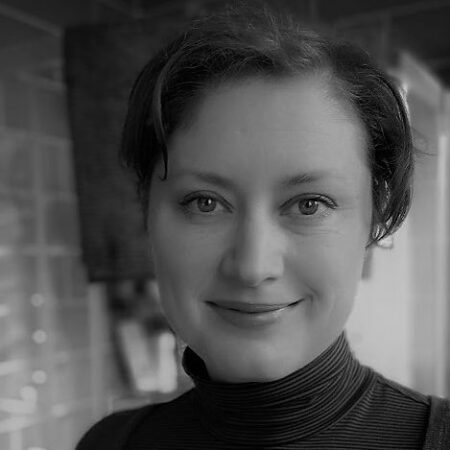Shaping future improvements for cancer diagnostics in the NHS


Georgia felt that post-doctoral fellowship at THIS Institute was the natural home for her research as it combined creative inquiry including ethnographic research with applying findings in health services and policy. As part of her fellowship, Georgia explored diagnostic safety culture in these cancer referral pathways and how to influence future improvement and service design for the pathways within the NHS through three research papers.
Georgia, what do you want to come from your research?
“I hope the research really helps clinicians and local cancer leadership figures who are questioning how best to run non-specific symptoms pathways – which are complicated and hard to design – alongside the patients, who need support and guidance. I also hope it helps guide them towards goals for improvement, to decide what the priorities for the services should be. Finally, I hope to go onto larger scale evaluations of non-specific symptom pathways and other diagnostic innovations with the networks I’ve made.”
Why did you choose to apply for a fellowship with THIS Institute?
“I knew healthcare improvement was being shaped by researchers who had received this sort of fellowship, so I was excited by the prospect to explore these new services in depth, using different research methods and engaging closely with clinicians, patients and commissioners. The fellowship also helped me combine the ‘reality’ of health services and policy and make connections with other researchers with different backgrounds thinking in new ways about how to improve services.”
I’m trying to tackle diagnostic safety issues at a system level which looks to understand how primary and secondary care connect, along with groups such as social care, diagnostics facilities, voluntary organisations and community groups
Generating evidence in diagnostic safety culture within the NHS
The non-specific symptom (NSS) or new general cancer pathways were developed to efficiently investigate symptoms such as weight loss, fatigue or when general practitioners have a ‘gut feeling’ about a patient’s symptoms. After learning about their potential for efficient diagnosis in Denmark, Georgia began researching this area when they started piloting the pathways in the UK.
In this first study, Georgia found that patients with non-specific symptoms could end up being diagnosed through emergency departments. When these pathways began being piloted in the UK, she wanted to conduct further research into how these pathways were designed and what it meant for patients.
When navigating the pathways while being investigated for cancer, patients often face a wealth of complex information. First, Georgia and her team conducted an ethnographic study aiming to understand patients’ required health literacy skill when navigating the new general pathway for cancer diagnosis. Working across four hospitals in England, 27 patients and 27 professionals were shadowed and interviewed respectively.
Results highlighted the significant demands on patients to understand the complex information they were provided with. Patients sometimes had trouble understanding their referral, investigations and complex results. Some patients also struggled to navigate the pathway they were on and even understand why they were on it. Some patients with persistent symptoms didn’t receive an explanation of their symptoms and felt unsure what to do when discharged. The study identified missed opportunities to support patients’ understanding of the pathways, leading to several issues. These included unnecessary help-seeking when leaving the pathway, delays, over-testing or investigating symptoms too broadly, resulting in in proper use of patient’s medical history. Finally, a lack of understanding could result in patients unable to engage in patient safety to report care errors.
Often it takes a while to diagnose cancer and other serious diseases…I want to keep designing projects that can capture this sort of complexity and come up with solutions for improvement.
In a second study, Georgia went on to explore the new treatments and support offered in a holistic way to patients on the new general pathway. Receiving holistic care could mean a broad assessment of symptoms, a referral to specialists and a timely diagnosis of non-cancer conditions so this study also examined how this type of care was implemented within the NSS pathways.
Conducted in four hospitals that provided NSS pathways, this multi-site ethnographic project involved a range of interviews, patient shadowing and observations as well as reviewing documents. Findings showed considerable variation in the scope and nature of holistic support. There were also tensions between delivering holistic care and meeting timed cancer targets and other challenges identified in the study. Findings pointed to the need for greater clarity on good ‘holistic’ care and how that could be achieved within existing systems of care.
Georgia’s third piece of analysis using this rich data looked at the different functions of the NSS pathway and their relevance to patient safety.
They found several distinct functions including safety-critical activities of assessing patient suitability, tracking test results, and ensuring continuity of care across the pathways. Their findings suggested that national and local improvement efforts could reduce unnecessary variation and facilitate delivering safe care locally through adaptable variation. Supplementing multidisciplinary teams with more consultants and introducing patient navigators could also improve safety in the NSS pathways.
Expanding the scope of her fellowship research
During her fellowship, Georgia also took the opportunity to work with Kaleidoscope – a social enterprise that provides consultancy in research and evaluation – to get her research used by clinicians and people working in cancer alliances.
With Kaleidoscope’s support, Georgia organised the workshop ‘Bridging Research and Practice: Optimising Non-Specific Symptom Pathways’, which bought together 70 stakeholders from primary and secondary care, charity, academia and policy. The workshop explored ways of improving patient experience in the NSS pathways, considered Georgia’s current findings on the topic and shared practical insights into how these findings could be applied to a range of roles and organisations to strengthen cancer pathways and care.
Considering the future of her research, we asked Georgia which area of she would like to expand into next:
“I’m trying to tackle diagnostic safety issues at a system level which looks to understand how primary and secondary care connect, along with groups such as social care, diagnostics facilities, voluntary organisations and community groups. Often it takes a while to diagnose cancer and other serious diseases, with periods of monitoring, waiting for results and deciding what to do next. I want to keep designing projects that can capture this sort of complexity and come up with solutions for improvement.”
Learn more about Georgia’s research here.